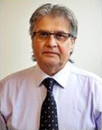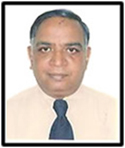|
Invited Speakers & Panel Experts : Presentation Abstracts
|
 |
Mr. Harshit Thakkar
Project Manager,
DEKRA Certification B.V.,
Germany
“Most recent regulatory
developments: Medical Device Single Audit Program (MDSAP)
and EU Enforcement of Unannounced Audits”
The
first part of the presentation will focus on the most
immediate impact on Industry from International
Medical Device Regulatory Forum (IMDRF) – the Medical
Device Single Audit Program (MDSAP), one audit serving
many regulations. Learn about the MDSAP for the US,
Canada, Brazil and Australia. Since May 2014,
authorities of these countries have been appointing
audit organizations for the MDSAP program. In the
future, MDSAP certificates will replace regular audits
from the named authorities.
The
second part of the presentation will focus on new
product sampling and testing requirements associated
with unannounced audits and offer suggestions for ways
manufacturers can prepare and train in advance. In
response to the EU Commission
Recommendation on 24 September 2013 (2013/473/EU),
Notified Bodies must implement unannounced visits to
CE-certified manufacturers, sub-contractors and/or
crucial suppliers. |
|
 |
Mr.
Apur Lathiya
Executive Vice President
Sales and Marketing,
Lubrizol Advanced Materials,
USA
“Tubing- More Than Just Dimensions”
Vesta,
a Lubrizol company, is a contract manufacturer of
precision thermoplastic extrusion for every catheter
component. This presentation will provide an overview
of not only the various tubing types and materials but
the importance of understanding tubing beyond
dimensions including the benefits of understanding the
assembly process and the functional use. Tubing types
will include balloon tubing; braided tubing,
multi-lumen tubing, profile tubing, as well as striped
and multi-layer tubing will be covered. |
 |
Mr. Sachin Sapar
Technical Service & Technology Manager,
General Industry,
Henkel Adhesive Technologies India, Pune
“Henkel Loctite®
Innovative Adhesive Solutions For Medical Device
Assembly”
The
medical market has evolved over the past several years
and is facing unprecedented challenges that were
unforeseen just a few years ago. Increased government
regulation, heavy cost pressures in emerging markets,
and increased public pressure to achieve
sustainability are challenging companies to drive
operational efficiency and revisit material selection
in order to succeed in the future global medical
marketplace.
To meet
the objective, device manufacturers are looking at
manufacturing process & exploring opportunities to
reduce the overall cost. They are looking at not only
input cost (i.e., materials), but also at the
manufacturing process and the outputs (i.e., scrap,
waste stream, etc.). While improving the quality of
the product they currently also have issue of
rejection with the use of conventional solvents (drip
marks, leaks, etc.), but these are never really
measured or looked into closely at because of the low
cost of solvents. Device manufactures are looking for
a way to replace potentially-toxic solvent bonds to
reduce and control worker exposure to toxic and
carcinogenic solvents. |
 |
Dr Ajay Luthra
CEO,
BioInteractions Ltd., UK
“Antimicrobial
Strategies for Medical Devices”
The
challenges for implantable medical devices coatings
are threefold – the coating should protect the device
from the body, protect the body from the coated device
and importantly without impairing the function of the
body or the medical device. This is a very pertinent
concept for antimicrobial medical devices.
The
clinical problem for implantable medical devices has
been known for some time and various methodologies
have been used to combat this problem. The price, both
in terms of patient life and treatment cost, is having
great effect on healthcare providers.
This
talk will consider the clinical problems, the
strategies employed to overcome medical device
infections and will also discuss a new approach
developed by BioInteractions Ltd, the AvertPlus™
Surface Enhance Antimicrobial Coating and reveal a
new concept to treat medical device infections,
Evolve™, this technology combines the advance dual
function anti-thrombogenic and anti-platelet moiety
with antimicrobial functionality. |
 |
Mr. K. K. Shaw
Associate Senior Faculty,
EDI, Ahmedabad
“Electrolytic
Dissolution Of Stainless Steel For Contamination Free
Orthopedic Implants – An Innovative Approach”
Method
of electrolytic dissolution of austenitic grades
stainless steel for electro-deburring and
simultaneously electro-polishing on stainless steels.
‘Corrosion’ as such has always been a dreaded word as
it is known to alter the properties of corroded metal
which in turn, affects the medium in which the metal
is placed. The problem is particularly encountered in
the case of orthopedic implants that are used in human
body for fixation and positioning of bones. The
rusting of these implants can at times even result in
toxicity of blood. Also, sometimes the implants that
are used are contaminated due to machining operations
like, drilling, reaming, milling, turning, polishing,
buffing, etc. These operations when carried out on
austenitic stainless steel components generate burrs,
chips, fine residual particles of iron on the machined
surfaces. In the absence of a suitable technology on
implants, it may also transmit contaminations, like;
iron particles, aluminum oxide, silicon carbide,
tungsten carbide and various wax compositions in the
implants. When implants with these contaminations are
used, they produce harmful effects in the body. It is
important for these parts to always remain in hygienic
condition in order to meet its purpose. These
contamination needs to be removed from the orthopedic
implants prior to their fixation in human body.
A
suitable electrolyte was, therefore, needed for
electro-deburring of implants and other plant and
machinery for removal of contaminations. Developed by
EDI, this technology of electropolishing by using
suitable electrolyte is a boon to the sector. The
invention ensures removal of contamination and hence
hygienic conditions. As Mr. K.K. Shaw, Inventor of the
technology and Faculty - EDI puts it, “In order to
produce machines as per international quality norms,
it is important for manufacturers to adopt the best of
technology that guarantees superior and safe results
in hygienic conditions.” |
 |
Mr. Nishad Dhurandhar
Manager, Operations
MICROTROL Sterilisation Pvt. Ltd., Mumbai
“ETO Sterilisation :
Technology, Trends And Developments”
ETO
Sterilisation continues to remain the most preferred
mode of sterilisation for several decades now.
However, it is important to be updated with current
industry trends.
Traditional use of spore strip indicators has been
replaced by Self Contained Biological Indicators,
which are easy to handle, test & retrieve. Direct
measurement of humidity is now possible as EtO
compatible humidity sensors are readily available.
Traditional use of sensors for temperature and
humidity mapping using long, rigid cables is replaced
by wireless/infrared probes. Dependence on plastic
films has reduced. The use of Medical grade paper on
one side has become the norm due to its
better permeability. Considering toxicity of EtO, it
is mandatory to have an exhaustive ‘Risk Analysis”
done. EtO gas abatement /scrubbing solutions are
available that convert EtO into a non hazardous form.
Monitoring of EtO levels in work areas is
important to assure worker safety.
In
order to meet market demands, sterilisation companies
have to constantly keep up with changing technology
trends. |
Page
1 :
2 :
3 :
4 :
5 :
6 :
7 :
8 :
9 :
10
: 11
: 12
: 13
: 14
: 15
: 16
: 17
: 18 : 19
: 20
: 21 |
